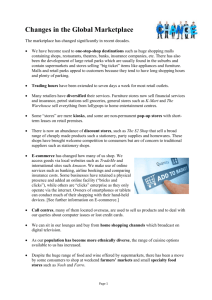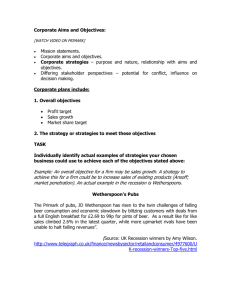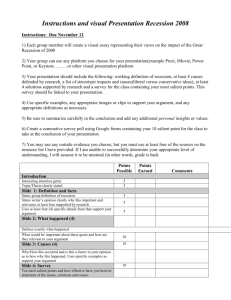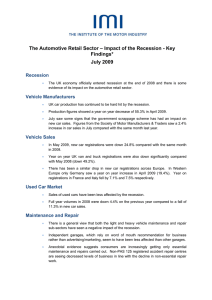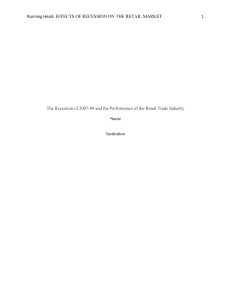3.2 F Changes in marketplace
advertisement
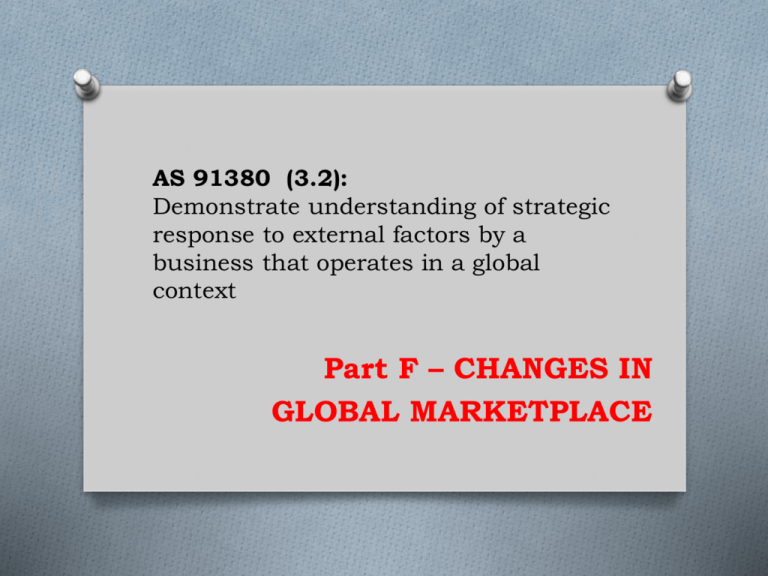
AS 91380 (3.2): Demonstrate understanding of strategic response to external factors by a business that operates in a global context Part F – CHANGES IN GLOBAL MARKETPLACE The marketplace has changed significantly in recent decades. O We have become used to one-stop-shop destinations such as huge shopping malls and large retail parks which are usually found in the suburbs. Malls and retail parks appeal to customers because they have a variety of stores, long shopping hours and plenty of parking. O Trading hours have been extended to seven days a week for most retail outlets. O Many retailers have diversified their services. Furniture stores now sell financial services and insurance, petrol stations sell groceries, general stores such as K-Mart and The Warehouse sell everything from lollypops to home entertainment centres. O Some “stores” are mere kiosks, and some are non-permanent pop-up stores with short-term leases on retail premises. O There is now an abundance of discount stores, such as The $2 Shop that sell a broad range of cheaply made products such a stationery, party supplies and homewares. These shops have brought welcome competition to consumers but are of concern to traditional suppliers such as stationery shops. O E-commerce has changed how many of us shop. We access goods via local websites such as TradeMe and international sites such Amazon. We make use of online services such as banking, airline bookings and comparing insurance costs. O Some businesses have retained a physical presence and added an online facility (“bricks and clicks”), while others are “clicks” enterprise as they only operate via the internet. Owners of smartphones or tablets can conduct much of their shopping with their hand-held devices. O Call centres, many of them located overseas, are used to sell us products and to deal with our queries about computer issues or lost credit cards. O We can sit in our lounges and buy from home shopping channels which broadcast on digital television. O As our population has become more ethnically diverse, the range of cuisine options available to us has increased. O Despite the huge range of food and wine offered by supermarkets, there has been a move by some consumers to shop at weekend farmers’ markets and small specialty food stores such as Nosh and Farro. O How we pay for our shopping has also changed. Cheques have almost disappeared, cash is used in fewer circumstances, but the use of electronic transfer payments has grown enormously. Perhaps the most significant change is that consumers and businesses are now very comfortable operating in a global marketplace. That is, buying internationally known brands, wearing clothing that has been manufactured overseas, and using the world wide web to research, select and pay for goods and services. Impact of the Recession An economic recession is defined as six months of declining gross national product (GNP). A recession that lasts for a year would be known as a double-dip recession. A recession has serious consequences for the business sector and the economy as a whole. In a recession: Well-managed businesses may be able to take advantage of a recession. Capital assets such as land may be relatively cheap and firms could invest in these in expectation that the economy will eventually improve The risk of retrenchment and job losses could encourage improved relations between employees and employers, which could increase efficiency. The recession may cause the business to perform in a leaner, fitter manner by closing unproductive branches or making tough decisions which will actually improve profitability. E-Commerce SWOT Analysis Business owners cannot afford to be complacent about the current success and future viability of their enterprise. A very effective tool for auditing a business and its environment, both internal and external, is a SWOT analysis which helps a business focus and build on its strengths, minimise weaknesses, take the greatest possible advantage of opportunities available, and anticipate any threats the business might face. Internal analysis The capabilities of the business, its strengths, and its areas of weakness should be examined. External Analysis Do an environmental analysis to identify opportunities for the business, and any threats or obstacles to performance.

